Miltonia orchid: types and care at home
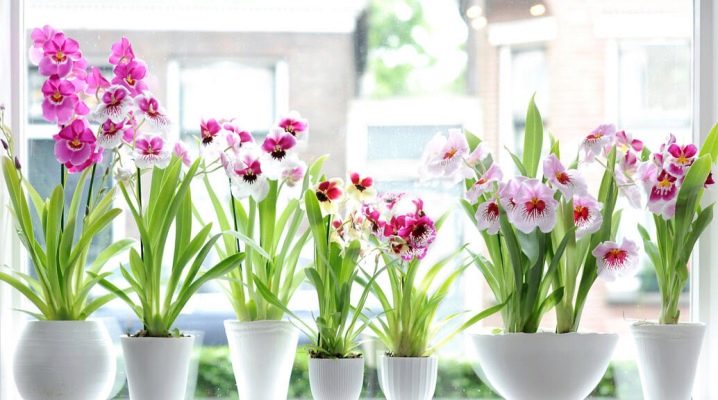
The orchid is successfully bred at home today. There are many of its types and subspecies that can decorate the windowsill, while caring for the plant is easy, it is only important to observe the conditions for its comfortable growth.
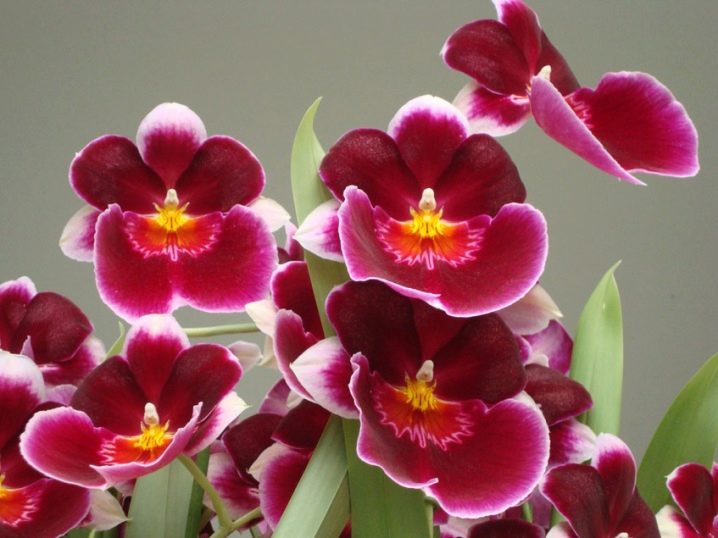
Peculiarities
The species range of the miltonia orchid begins in Argentina, Paraguay and extends to the state of Pernambuco in northeastern Brazil. These flowers occupy in their natural environment areas at an altitude of 200 to 1500 meters, but most species are found at a level of 600 to 900 meters. The plant can be found in shady areas within the forest and where there is a lot of light, however it never grows in direct sunlight.

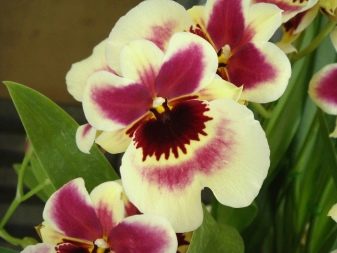
The most ideal location for it is well-ventilated places where the Colombian orchid receives a lot of moisture at night and early in the morning. They are epiphytes, and because they grow very quickly, each pseudobulb gives birth to two new shoots each year, resulting in large colonies of flowers soon after. Miltonia orchid has one or two leaves, the inflorescence consists of waxy flowers. The lip is large and flat and has no corns. The flowers have a delicate exotic aroma, they are large enough and delight with their appearance for a long time. A variety of this genus is widely used to produce artificial hybrids.
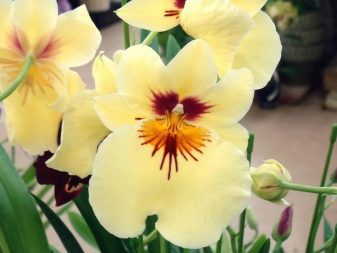
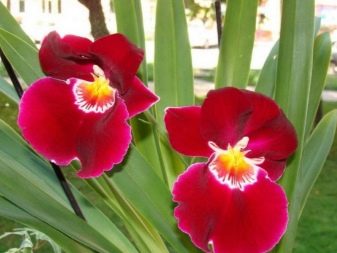
Miltonia Sunset is a medium-sized orchid, reaching a height of about 50 centimeters. Their pseudobulbs are loosely packed, and slightly spread apart by the rhizome, 2 to 5 centimeters long. The roots grow longitudinally in large numbers. They are white, relatively thin, usually short and barely branched.

Leaves change color from yellowish, bright lime green to olive green, depending on the type and amount of sunlight they receive. They can be oval and flat on the sides, as well as tetragonal and elongated, and almost always have two apical leaves. They are narrow, flexible and hardly more than 3 centimeters wide, sometimes slightly pointed.
There may be one or two inflorescences per pseudobulb. They are erect and not branched, often longer than leaves, with 1 to 12 flowers that open simultaneously or gradually. When the old 3 or 4 have faded, new ones open up. This orchid grows in intermediate conditions: moderate light in summer and more in winter. Loves moisture, but dislikes swampy, stagnant land.
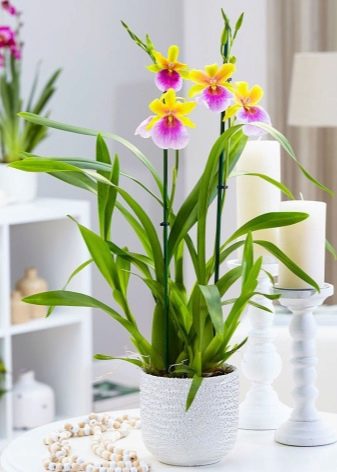
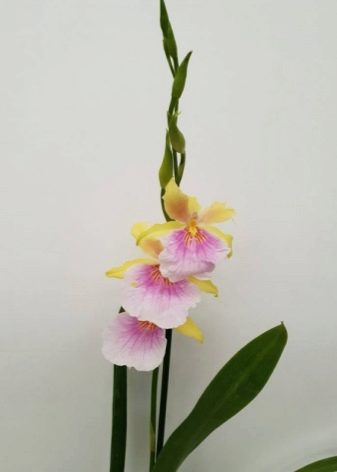
Varieties
There are many types of hybrid varieties that growers today grow on their windowsills. Some names are better known, others are less common.
- "Snow white" Miltonia blooms from October to November. Inflorescences bear 4 to 6 flowers, 6-7 cm wide. Sepals and petals are yellow with large burgundy spots, white lip with lavender markings at the base. The orchid is found in the Brazilian states of Espirito Santo, Rio de Janeiro and São Paulo, it grows in the forests of the lower mountain regions with high humidity at altitudes from 500 to 600 meters.
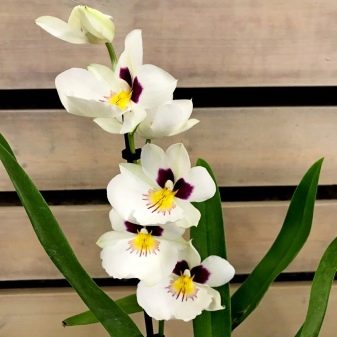

- Clos. Inflorescences usually have 6 to 8 flowers, 8 cm in diameter. Sepals and petals are yellow-brown with maroon spots, the lip is white with pink markings at the base. The first articial hybrid was Miltonia Goodale Moir, registered in 1954.The plant is found in the Brazilian states of Minas Gerais, Rio de Janeiro and Espirito Santo, grows on single trees in the forests of mountainous regions at altitudes from 300 to 1000 meters.
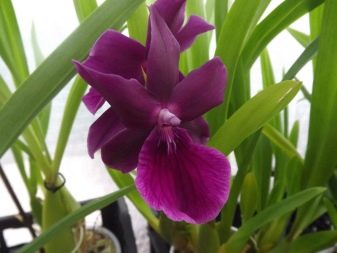
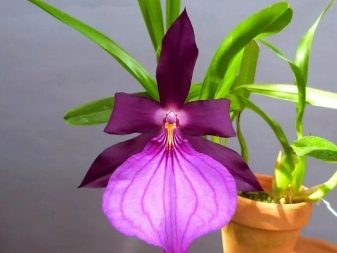
- "Wedge-shaped". The plant can be found in the forests of mountainous regions with high humidity at an altitude of 1400 meters. Blooms from about February to March. Inflorescences usually show 4 to 6 flowers 6-7 cm wide. Sepals and petals are yellow with large burgundy spots, and the lip is white with a lavender mark at the base. No natural hybrids have been described and only 4 artificial ones have been recorded so far.

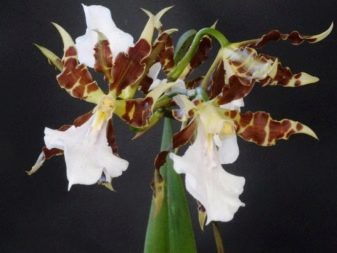
- "Yellowish". It blooms from September to January in nature, as well as from April to June at home. Usually 5 to 10 flowers are formed, star-shaped, white-yellowish, 7-8 cm wide. The plant is found in Brazil, Paraguay and Argentina. In its natural habitat, it is exposed to high daily temperature extremes.
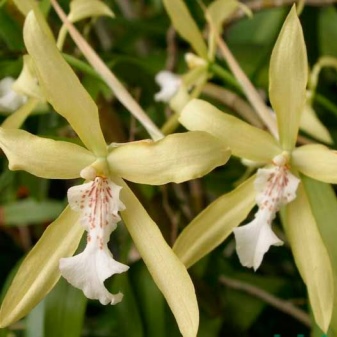
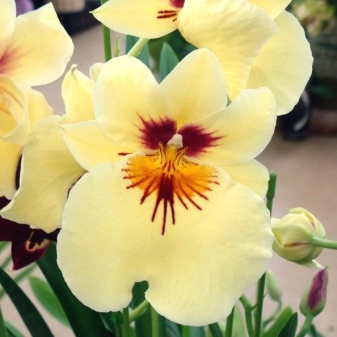
- Kayashima. Blooms from summer to autumn, forms six flowers 5 cm wide. The plant lives in the state of São Paulo in Brazil at an altitude of about 900 meters.
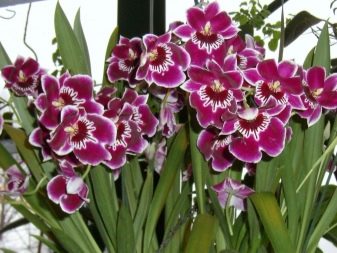

- Morel. Flowers appear from February in nature, and from August to October in culture. Inflorescences usually bear only one flower 7-9 cm wide. The variety was described in 1846 and is the most commonly cultivated variety.
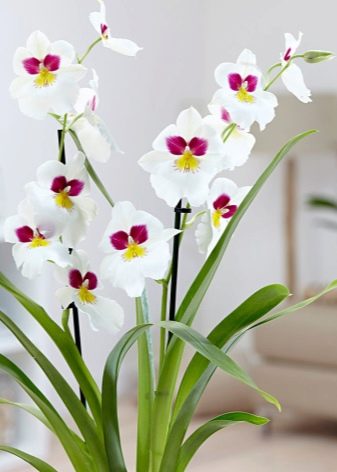
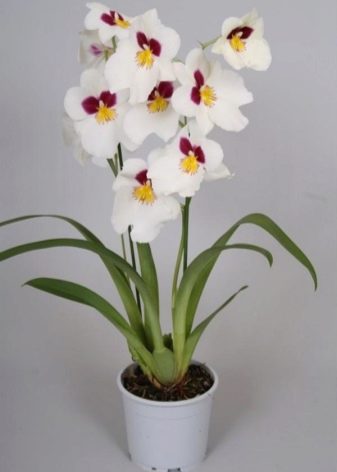
- Fimochila. Pleases with flowering from spring to summer. Only a few 5 cm flowers are formed on the inflorescence. They have a pleasant aroma.
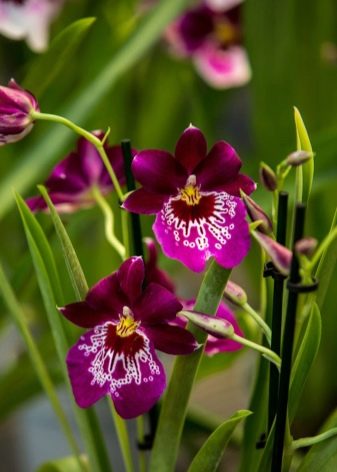
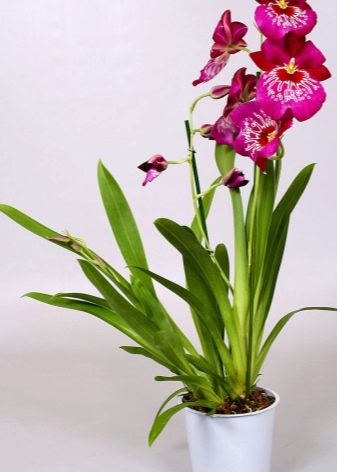
- Regnel. The plant blooms in nature from January to May, and at home from August to October. The inflorescences have 4 to 5 flowers 6.5 cm in diameter. The sepals and petals are white, the lip is light pink to purple.
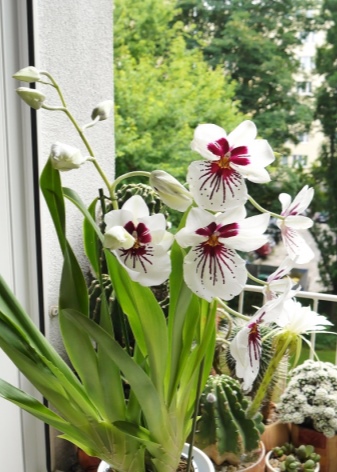
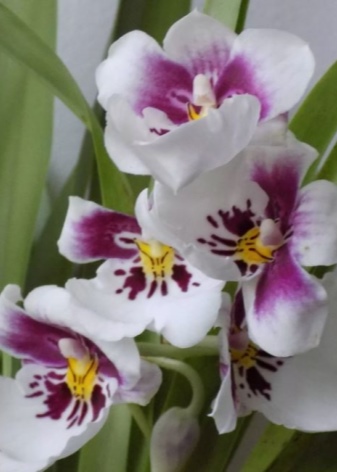
- "Spectabilis". It blooms in the summer with one flower 10 cm wide. The plant is found in the tropical forests of Southeast Brazil at an altitude of about 800 meters.


Transfer
After the purchase, most experts advise to transplant the orchid, but do this no earlier than next spring. It is worth acting carefully - most species do not like to disturb their root system, but it is imperative to check it for damage, remove rotten processes. Unhealthy roots are those that have developed rot, are soft to the touch and are brown in color.
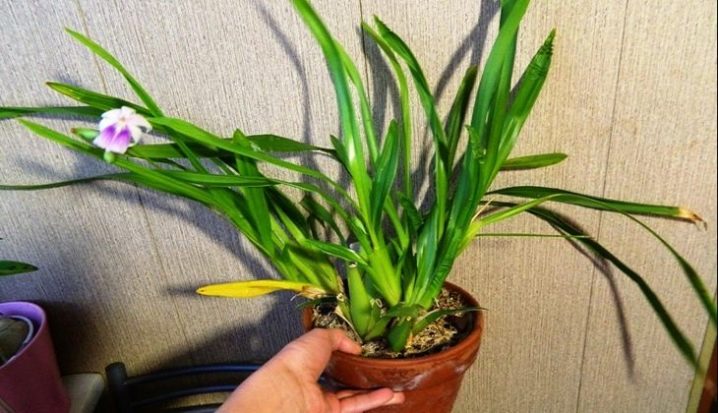
It makes no sense to use the old soil, it is better to buy a new one or make it yourself using peat and pine bark. Only a mature plant is suitable for transplanting, which has completed flowering and produces new growth before dividing.
All tools must be treated with alcohol, hot flame or dusting with sulfur powder. Orchids are prone to infestation, and doing this will help protect them from bacteria. You can use a crushed activated carbon tablet. The transplant process is phased.
- The plant is tipped to one side and removed from the pot.
- Rinse the roots well under water to remove the old soil as much as possible. If they have sprouted into previously used bark, do not touch it.
- You will also need to trim off any dead leaves, wilted inflorescences.
- If you share a plant, then you should first make sure that each part has three healthy pseudobulbs with leaves and rhizomes.
- The soil should be slightly damp when the plant is placed in it. You cannot ram it, because it needs oxygen. You can add sphagnum moss to the soil, it allows you to make the soil soft, while retaining moisture in it longer.
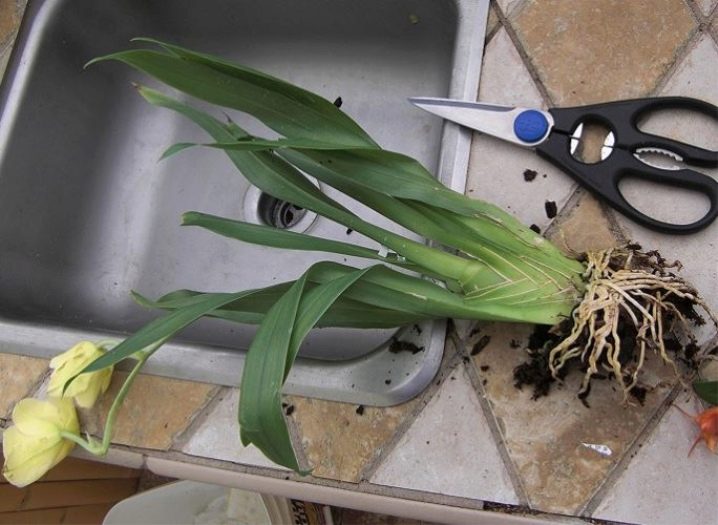
Bloom
You can make an orchid bloom again without considering the timing, but it requires avoiding standard mistakes. Orchids should be placed in an area with indirect sunlight. If you plan to put it on the bedside table in the office, where most of the time there is a shadow, then you will need to buy an additional lamp. Unlike most plants, the orchid will die if given too much light. Direct sunlight burns the leaves, so it is advisable to cover the window with tulle.Adjusting the amount of light day and night, as well as temperature, helps to awaken new pseudobulbs.
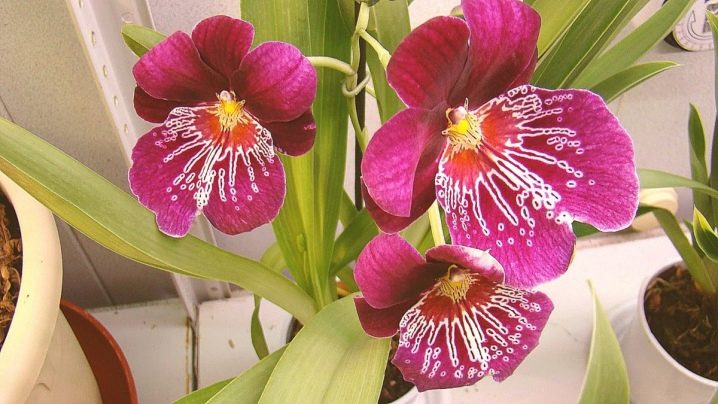
The described plant should grow in temperatures between 65 and 75 degrees Fahrenheit. It will not be able to cope with its sudden changes, for this reason it is recommended to keep the orchid warm. If the flower is in a sterile inorganic mixture, it may not be getting the nutrients it needs. You can fill their deficit with fertilizers. It is important to take care of the size of the pot as when the plant outgrows its container, the roots will suffocate from lack of proper ventilation.
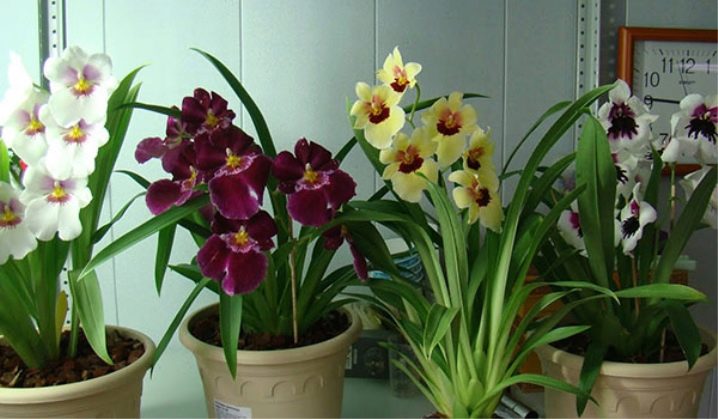
Unlike most flowers, orchids bloom best in the fall. Do not flood the flower too much, otherwise it will not bloom. If the roots begin to change color from a healthy green to brown, it's time to stop watering and not resort to it for another week. Lack of moisture can negatively affect growth in the same way. If the leaves look dry, you need to adjust the amount of water supplied.

As soon as the orchid stops blooming, it enters a stage called dormancy. It may seem that the plant is dead, but it is not. It is rest as it replenishes the nutrients expended during the flowering process. The resting stage usually lasts about 6-9 months. The orchid then has enough energy to release the flower again.
However, sometimes plants need help and require a little more attention. There are three easy steps to making a flower bloom.
- After the orchid enters the resting phase and stops flowering, they begin to make top dressing. It is best to use a balanced houseplant fertilizer. Make the composition monthly.
- To activate growth, move the container with the flower to a colder room, where the temperature is between 55 and 65 degrees Fahrenheit.
- After the peduncle has appeared, the pot is returned to its previous conditions and the orchid is given a couple of months to acclimatize.
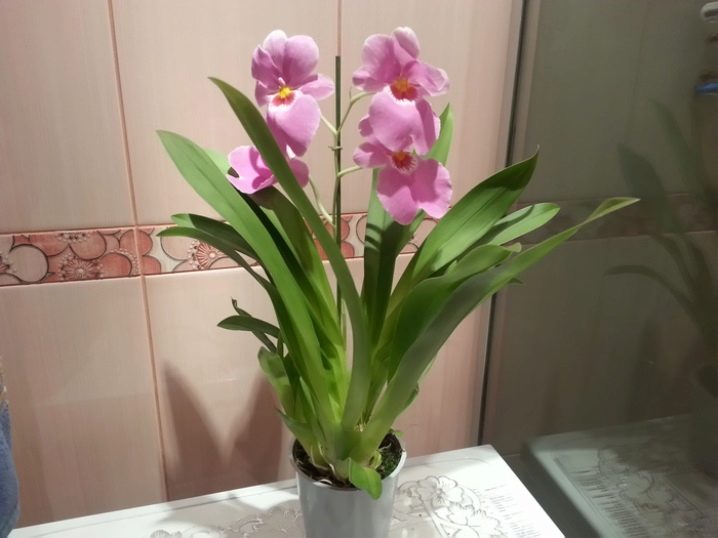
How to care?
Home care is very simple. With experience, it becomes easier to determine how a plant reacts to changes in temperature and humidity. How long an orchid blooms depends largely on how well the grower takes care of it. Leaving can be exhausting and sometimes frustrating. The key to success is not only taking into account the advice of professionals, but also being attentive to the needs of the flower throughout the growing season. It is important to remember that orchids are different from most types of plants, so the amount of time spent caring for them is an indicator of a successful result. There is no secret in the maintenance of a flower, it just loves to be taken care of.
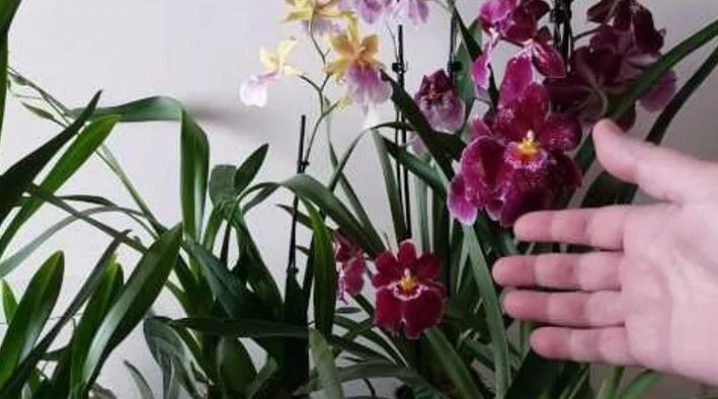
Lighting
One of the biggest challenges in growing an orchid is providing it with the right amount of sunlight. Unlike most plants, these need indirect rays. The best place is the east and west window. When black tips appear on the leaves, you need to change the position of the flower, since such changes indicate burns.
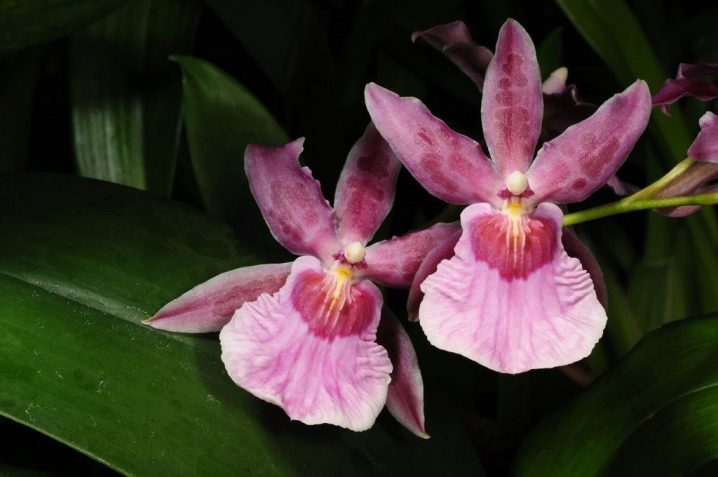
Temperature and humidity
Orchids grow best at moderate room temperatures. They can withstand fluctuations of +/- 10 degrees, but no more. It is best to avoid extreme temperature changes or drafts, so it is recommended to keep the pot indoors not on a windowsill during winter. It is also important that there are no heating elements or an air conditioner nearby, even normal ventilation can negatively affect.
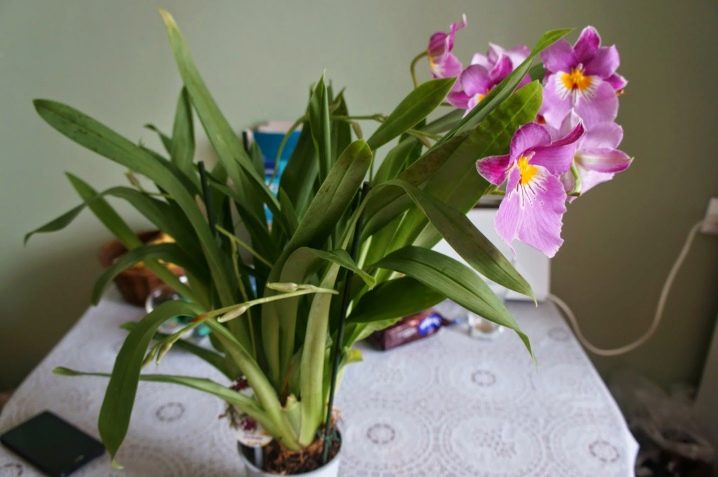
Watering
Most orchids should be watered every week. When the soil becomes dry, it is time to moisturize it. The best way is to water from the tap, then let the excess moisture drain through the drain holes. Avoid getting moisture on the crown and leaves.
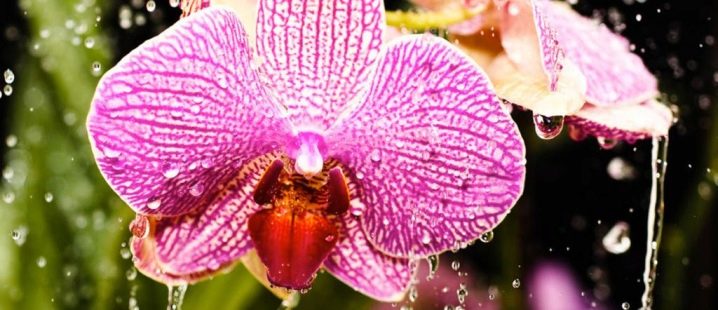
Top dressing
Orchids are grown in the bark, because it retains the necessary moisture longer, is lighter than ordinary soil, but in such soil there is less nitrogen necessary for the normal development of the flower. The grower is required to feed the orchid and make up for this deficiency. Experts suggest using a water-soluble fertilizer with a higher nitrogen level. To increase flowering, you can take a composition with a high phosphorus content, which begins to give in the fall.

Fertilize orchids at least once a month. However, for best results, such dressings must be diluted in a smaller proportion and applied weekly, especially during the growing season. In winter, when the plant is dormant, return to feeding once a month and use the standard dose.
When applied weekly, it is necessary to dilute the solution four times more than what is written on the package. They feed the orchid with fertilizers along with watering, trying not to get on the leaves. Moisten the soil with clean water at least once a month to remove unused fertilizers. When feeding on a monthly basis during the growing season, dilute it twice as much as indicated on the pack.
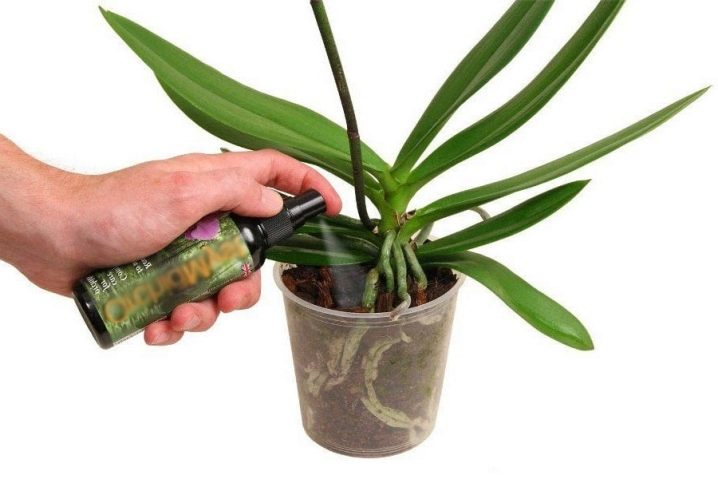
If the grower notices that the leaves of the orchid are withering, this is due to too many minerals. This problem often occurs with plants that do not grow in direct sunlight. You can move the pot to a more sunny location and use less fertilizer. If that doesn't work, the problem may be over-watering. Orchids need to be fed regularly as all nutrients are quickly washed out of the soil. Regardless of the composition of the fertilizer, it should contain little or no urea. If a person does not know which dressing to use, it is better to take the one that was used for other flowers in the house.
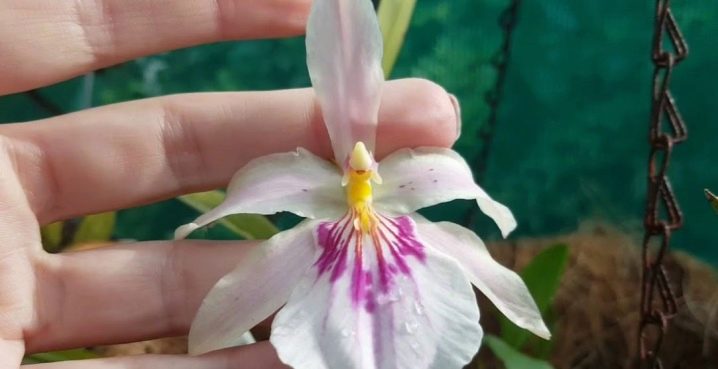
Plants usually do not suffer from calcium deficiency, but this problem sometimes occurs in the described flower. To avoid this, lime can be added to the growing medium at the very beginning. If you can get calcium nitrate, you can add 0.02 ounces per 4.5 liters of water to the top dressing.
Urea is the most inexpensive form of nitrogen, which is perhaps why it is often present in finished formulations. However, it is important to note that the roots are unable to absorb this element, but it helps to use other minerals from the soil with success. Orchids usually respond well to foliar feeding. It is important, however, to dilute the mixture highly and make sure it does not get on the roots.

Reproduction
The simplest breeding method of the described species is when the orchid has given a new sprout or has released a peduncle. In this case, you will need to divide the mother plant. This is done using a sharp and pre-disinfected knife. The cut is then treated with an antiseptic. For example, you can take a crushed activated charcoal tablet. The baby is removed after flowering after a month and a half. It is by this time that a healthy and viable root system appears. The best time is spring, when several leaves are already forming.
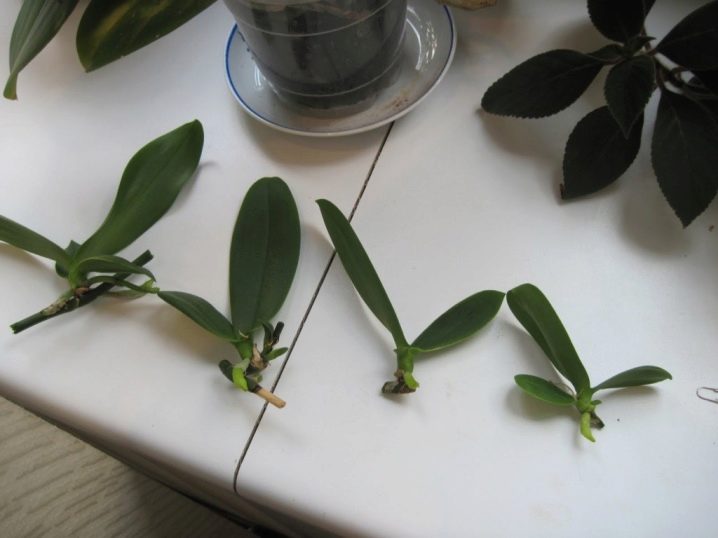
If the flower faded three months ago, propagation by cuttings can be used. This is the simplest and cheapest method. As a planting material, a peduncle is used, cut into several parts. Germination is carried out in sphagnum moss, which creates ideal conditions for the growth of a new root system. To speed up the process, it can be poured with a biostimulant. By dividing the flower, they rarely try to propagate the orchid, since in this case the likelihood of rot development is high. The plant must be mature and strong to survive the process. The main idea is to cut off the top and then let it germinate in a container with water and a biostimulant.

Diseases and pests
Even if the grower makes a lot of effort to ensure that his orchid blooms and multiplies regularly, it so happens that yellow leaves appear. In this case, not everyone understands what to do next, how to save a flower or reanimate it if a bacterial infection has occurred. Most often, the orchid suffers from root rot, since too frequent watering is provided. In this case, you will need to clean the roots, remove them from the pot, rinse and remove all rot. The soil is completely replaced, and the pot needs to be properly disinfected.
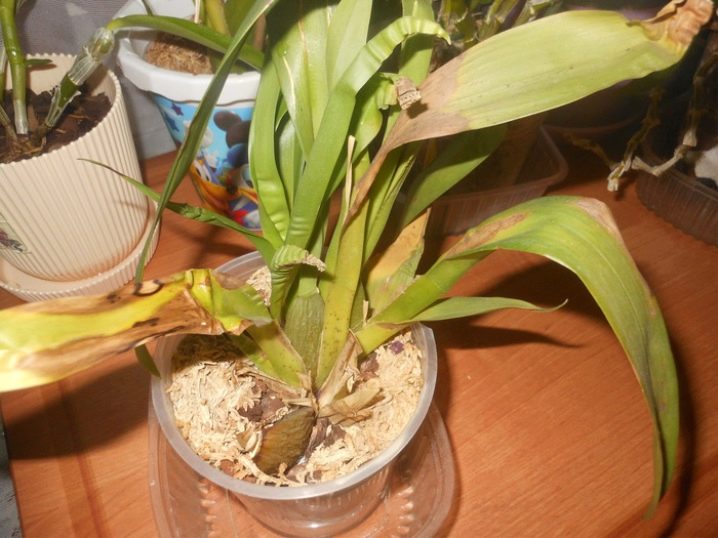
Bacterial infections are not treated, the plant dies, since no effective remedies have been created for them at the moment. As for the fungi that actively attack the flower, insecticides help well here. Ticks, bugs, aphids and some other insects also like to feed on orchid sap. Their appearance does not go unnoticed by the grower. Spots appear on the leaves, plaque, which is not characteristic of this plant. In this case, it is enough just to increase the humidity or send the orchid under a contrast shower, and then treat it with a fungicide or soap solution.
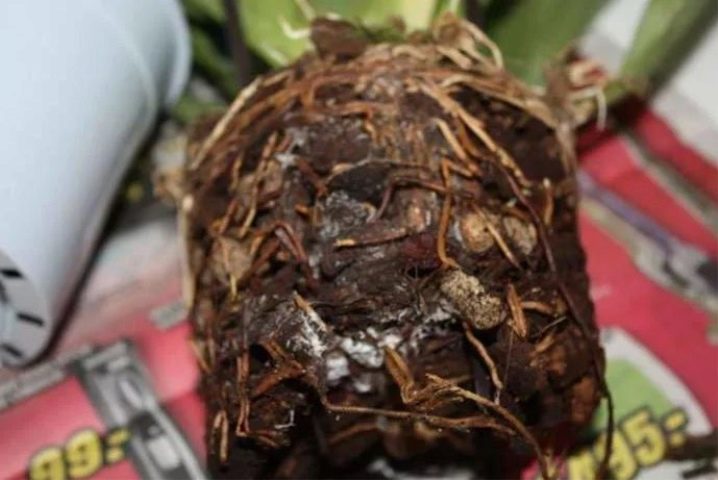
For information on how to care for the miltonia orchid, see the next video.































The comment was sent successfully.